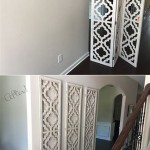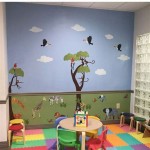Can You Have Your House Decorated During Lockdown?
The global COVID-19 pandemic brought unprecedented restrictions on daily life, impacting everything from social gatherings to business operations. Consequently, homeowners faced a unique set of challenges and questions regarding home renovations, including interior decorating. The ability to have a house decorated during lockdowns varied significantly depending on the location, the severity of restrictions, and the specific services involved. Understanding the complexities of these guidelines and their practical implications is vital for those seeking to improve their living spaces during periods of restricted movement.
Government regulations and public health guidelines were the primary determinants of whether home decorating services were permitted. These regulations differed considerably between countries, states, and even local municipalities. Some areas implemented strict lockdowns that prohibited all non-essential businesses, including interior design firms, painting services, and construction-related activities. Other regions took a more nuanced approach, allowing certain businesses to operate under specific safety protocols or classifying them as essential services. The interpretation of these guidelines, and the willingness of local authorities to enforce them, further complicated the landscape.
The nature of the decorating services themselves played a crucial role. Projects that required multiple contractors, close proximity, or the use of potentially hazardous equipment faced greater scrutiny and were more likely to be restricted. Tasks like painting, wallpapering, and furniture assembly might have been permitted if conducted by a single individual or with minimal contact. Larger-scale renovations involving demolition, structural changes, or the presence of multiple workers typically faced more stringent restrictions. Supply chain disruptions also influenced the feasibility of certain decorating projects, making it challenging to obtain necessary materials and equipment.
Key Points to Consider:
Several key factors decided the possibility of arranging house decoration during lockdowns. These elements influenced the feasibility and legality of such projects:
1. Government Regulations and Local Guidelines
The most important factor was the specific regulations in effect within the homeowner's location. Researching and understanding these regulations were essential. These guidelines often changed, so staying informed was critical. Checking official government websites, local authority announcements, and public health mandates provided the most accurate information. Failure to comply with these regulations could result in fines or other legal consequences for both the homeowner and the service provider.
2. Classification of Essential vs. Non-Essential Services
Many jurisdictions classified businesses and services as essential or non-essential. Services deemed essential were generally permitted to operate during lockdowns, while non-essential businesses were often closed or subject to severe restrictions. Interior decorating services were not always clearly defined within these categories. Some regions considered them non-essential, while others allowed them to operate under specific circumstances, such as when the work involved single-person operations and complied with strict safety protocols.
3. Permitted Activities and Restrictions on Contact
Even when decorating services were allowed, numerous restrictions typically applied. Social distancing measures, mask mandates, and limitations on the number of people allowed on-site at any given time were common. Contactless procedures, such as virtual consultations, online material ordering, and remote project management, became increasingly prevalent. Activities involving close physical contact or the presence of multiple workers tended to be more restricted. Services like wallpaper installation, which involved direct contact and often required multiple workers, frequently faced limitations.
4. Safety Protocols and Risk Mitigation
Homeowners and service providers were responsible for adhering to stringent safety protocols to minimize the risk of COVID-19 transmission. These protocols included wearing face masks, practicing frequent handwashing, maintaining social distancing, and disinfecting work surfaces and equipment. Some jurisdictions required businesses to implement detailed safety plans, including temperature checks, health screenings, and procedures for handling potential exposures. A service provider's adherence to these protocols was a critical factor in determining the project's feasibility and safety.
5. Material Availability and Supply Chain Disruptions
The pandemic caused significant disruptions to global supply chains, making it more challenging to procure certain materials and equipment. Homeowners and decorators needed to anticipate potential delays and shortages when planning projects. Checking the availability of desired materials with suppliers before commencing work was important. Adapting project timelines based on material delivery schedules was a necessity. Considering alternative materials or designs, if necessary, could help overcome supply chain challenges.
6. Virtual Consultations and Remote Project Management
Technology played a crucial role in enabling home decorating services to continue during lockdowns. Virtual consultations, utilizing video conferencing tools, allowed designers and homeowners to discuss project requirements, review design options, and obtain quotes without in-person meetings. Online platforms facilitated the ordering of materials and furniture, reducing the need for physical store visits. Remote project management tools permitted decorators to monitor progress, communicate with contractors, and address any issues without being physically present on-site. These virtual approaches became invaluable in mitigating the limitations imposed by lockdowns.
7. Insurance and Liability
Homeowners were advised to verify that their homeowner's insurance policies covered any decorating work performed during lockdowns. Service providers should have adequate liability insurance to protect against potential accidents or damages. Clear contracts, outlining the scope of work, payment terms, and safety protocols, were essential. These documents helped to protect both the homeowner and the service provider, particularly if a dispute or unforeseen event occurred. Understanding the implications of insurance and liability was especially important during the pandemic, given the uncertainties and potential risks involved.

Covid 19 Late Decorations Light Up Lockdown Bbc News

12 Ways To Re Decorate Your House During Lockdown

15 Ways To Turn Your House Into A Perfect Lockdown Home Berger Blog

Extreme D I Y For Home Decor The New York Times

Lights Bring Welcome Festive Cheer To England Lockdown The Guardian

Liven Up Your Decor And Mood Easy Home Revamp Tips To Try Amid Lockdown Extension Fashion Trends Hindustan Times

Need Advice On Decorating Your Home During Lockdown Try A Virtual Interior Design Service

Lesson From Coronavirus Build Better Balconies Bloomberg

Covid 19 Late Decorations Light Up Lockdown Bbc News

Let S Bring Joy Into The House As Early Possible Why Britain Is Already Celebrating Guardian







